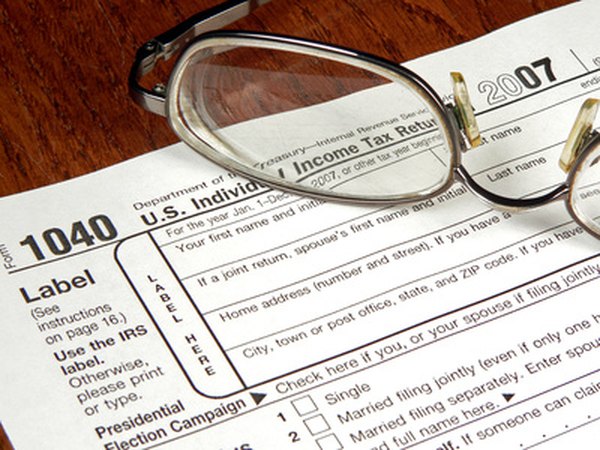How to Enter Short-Term Capital Gains
Use Form 1040 if you have short-term capital gains.
tax forms image by Chad McDermott from Fotolia.com
If you've made money selling assets you've owned for less than a year, such as stocks or other investments, you must share the news with the Internal Revenue Service. The way you report the gains depends on how they were reported to the IRS on Form 1099-B, if at all. You also need to determine your long-term capital gains or losses. If you have a net long-term loss, this will offset your short-term gains.
Divide your short-term capital gains into three categories: trades for which you received a Form 1099-B that shows your basis; trades for which you received a Form 1099-B that doesn't show your basis; and other short-term trades that aren't reported with a Form 1099-B.
Step 2Report each category of short-term gain on a separate Form 8949, Part I. For example, if you have three short-term gains in the first category and two in the second, you would need to use two different versions of Form 8949, Part I. If all your short-term gains are from just one category, you only need to file one Part I. On the form, include the dates you bought and sold the items, the price you paid, the price you received, and a description of each item, such as 200 shares of ABC Corp. stock.
Step 3Calculate your total gain or loss on each Part I you filled out. For example, if you only filled out one and had $7,000 in gains and $2,000 in losses, your net short-term gain would be $5,000.
Step 4Carry over the totals from each Form 8949 Part I to Schedule D, Part I, and complete the remainder of Schedule D. These amounts will eventually be netted with your long-term gains and losses. The total goes on line 13 of Form 1040.
References
Resources
Tips
- You don't report gains until you sell the stock. If the price goes up but you don't sell the stock, your gains don't appear on your taxes.
Writer Bio
Based in the Kansas City area, Mike specializes in personal finance and business topics. He has been writing since 2009 and has been published by "Quicken," "TurboTax," and "The Motley Fool."

